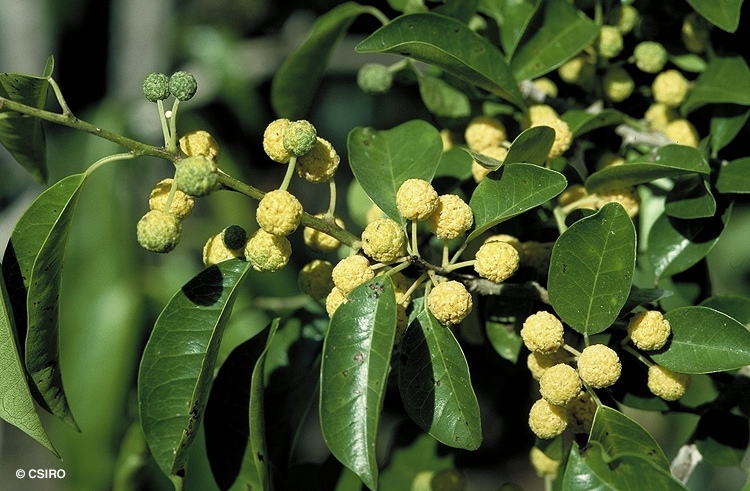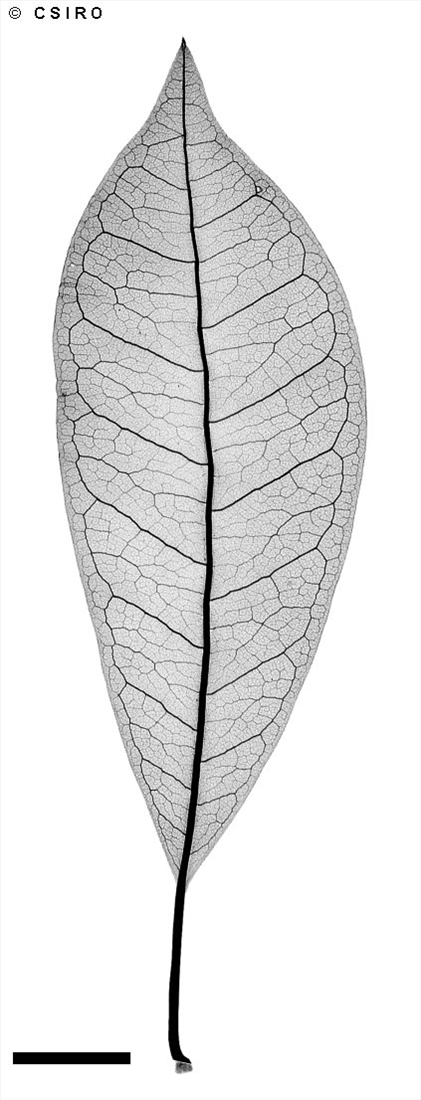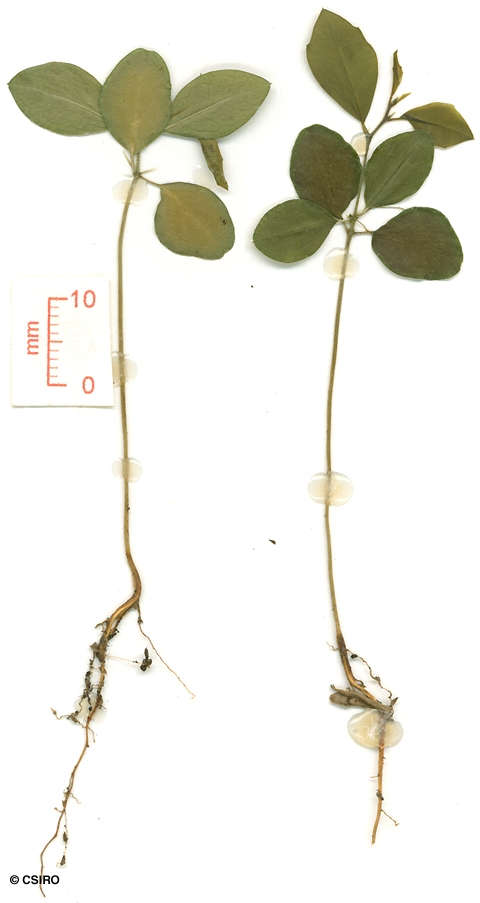Australian Tropical Rainforest Plants - Online edition
Maclura cochinchinensis (Lour.) Corner







Corner, E.J.H. (1962) The Gardens' Bulletin Singapore 19 : 239.
Cockspur Thorn; Cockspur
Usually grows as a vine but sometimes flowers and fruits as an untidy shrub. Vine stem diameters to 5 cm recorded. Smaller stems usually armed with large recurved spines. Bark exudate white or cream but somewhat watery. A conspicuous orange layer is usually visible just beneath the dead bark.
Branches armed with axillary spines about 8-10 mm long or longer which are straight or recurved. Stipules caducous, narrowly triangular, about 1-2 mm long. Stems, twigs and petioles produce a milky exudate. Leaf blades about 3.5-7 x 2-3.5 cm, petioles about 0.8-1.2 cm long. Lateral veins forming definite loops inside the blade margin.
Flowers packed in dense heads about 7-11 mm diam. Perianth fleshy, tepals about 3-3.5 mm long. Stamens attached to the tepals. Pollen white. Styles and stigmas protrude from the inflorescence and resemble miniature pigs tails.
Fruits globular, resembling a raspberry (Rubus spp.) or mulberry (Morus spp.) in structure. The black remnants of a stigma remain attached at the apex of each fruit. Embryo white, cotyledons wider than the radicle. Radicle about as long as the cotyledons and curved around the edge of the cotyledons.
Cotyledons about 10-14 x 7-10 mm, petiole about 3 mm long. First pair of leaves of similar size to the cotyledons but with spines in the axils. First pair of leaves with toothed or smooth margins. At the tenth leaf stage: most parts emit a milky exudate when cut or broken. Leaf blade about 15-17 x 8-9.5 mm, petiole about 2 mm long. Stipules narrowly triangular, about 1 mm long. Spines axillary, about 5-11 mm long. Seed germination time 16 to 18 days.
Occurs in CYP, NEQ, CEQ and southwards as far as south-eastern New South Wales. Altitudinal range in CYP and NEQ from near sea level to 1000 m. Usually grows as a vine in well developed rain forest but probably more frequently encountered in the drier rain forests where it tends to flower and fruit as a shrub. Also occurs in Malesia.
This species has been suspected of being poisonous to stock but feeding tests have not confirmed this. Everist (1974).





